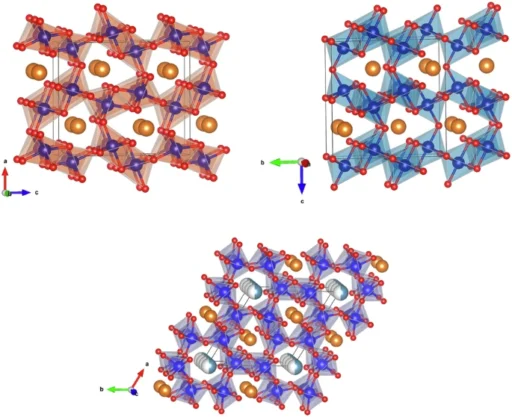Table of Contents
Overview:
Spinel-type compounds have attracted considerable interest because of their distinctive crystal structure and diverse array of uses. These compounds, which have the general formula AB2O4, are frequently present in both naturally occurring minerals and artificially produced substances. Under high pressures, these spinel structures can transform into new phases referred to as post-spinel phases. The high-pressure phases are of enormous significance in the fields of geochemistry and materials science. They provide valuable insights into deep Earth processes and hold potential for the development of new materials.
Comprehending the Structures of Spinel:
The chemical formula AB2O4 represents spinel structures, which consist of a close-packed, cubic configuration of oxygen anions, with cations filling the spaces between them. Typically, the tetrahedral sites house the A cation, while the octahedral sites house the B cation. The distribution of cations across the interstitial sites gives rise to various versions of this structure. As a result, there are variations in characteristics and uses.
Pressure is a crucial factor in altering these structures. Under conditions of elevated pressure, the atomic configurations can undergo displacement, resulting in more compact structures with distinct physical and chemical characteristics. Gaining comprehension of these alterations is essential for a wide range of disciplines, spanning from geology to materials science.
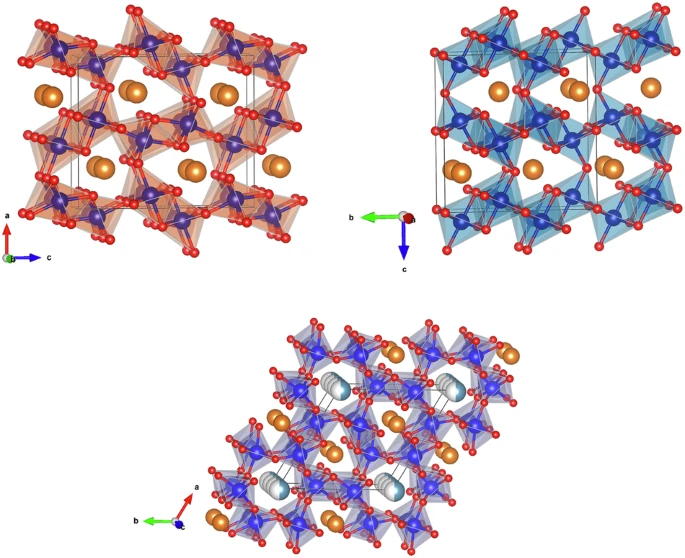
An Overview of High-Pressure Phases:
High-pressure phases are specific structural configurations that materials assume when subjected to intense pressure. They are commonly found in the deep interiors of planets or artificially created in laboratories. These phases frequently display distinct features compared to their lower-pressure counterparts, which is crucial for comprehending the behavior of materials in extreme environments.
High-pressure phases in geochemistry offer insights into the mechanisms taking place in the Earth’s mantle and core. They also assist in the interpretation of seismic data and the comprehension of the dynamic mechanisms that propel plate tectonics. Materials science researchers investigate these phases to assess their potential for developing superhard materials, improved ceramics, and innovative electronic components. High-pressure experimental techniques using the large-volume apparatus.

Structures of the post-spinel type:
Post-spinel-type phases are the structural forms that occur under high pressures and are similar to the traditional spinel structure. These structures form when spinel-type compounds experience pressures that exceed their stability limitations, causing a phase transition into a more compact state. Contrary to the initial spinel structure, post-spinel phases frequently entail a rearrangement of cations, resulting in distinct coordination environments as opposed to cations in both tetrahedral and octahedral positions.
Minerals such as ringwoodite, a high-pressure phase of Mg2SiO4, and perovskite-type structures, which can form from AB2O4 compounds under severe circumstances, commonly make up post-spinel compounds. Understanding these stages is crucial for understanding the mineral composition of the Earth’s transition zone, located between the upper and lower mantle. Crystal structures of post-spinel phases.
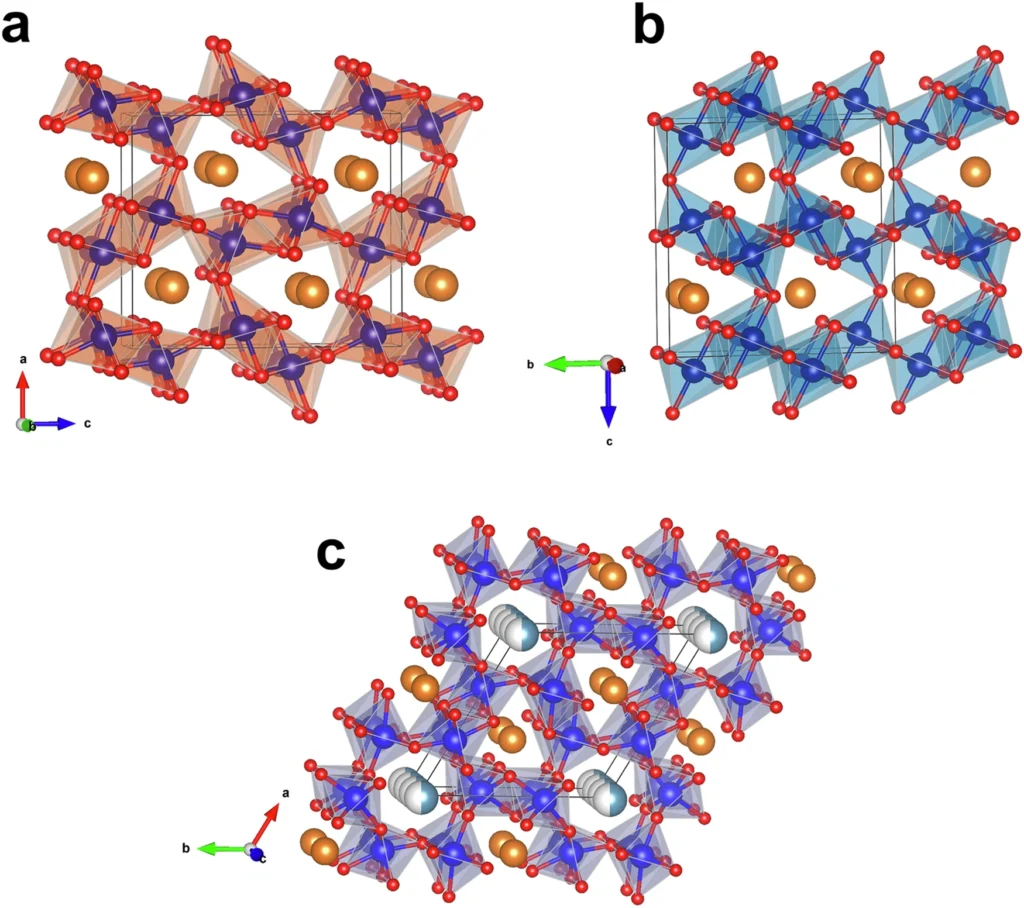
Formation is the process that forms post-spinel phases:
High-pressure environments, typically within the range of several gigapascals (GPa), form post-spinel phases. The Earth’s mantle naturally reproduces these conditions, and laboratories can replicate them using diamond anvil cells or multi-anvil presses. The transition from a spinel to a post-spinel phase occurs due to the material’s requirement to achieve a more stable configuration when subjected to higher pressure, generally leading to a more compact structure.
Common experimental techniques like X-ray diffraction (XRD) and Raman spectroscopy often study the transitions. Theoretical models, such as density functional theory (DFT) and molecular dynamics simulations, play a vital role in predicting the behavior of these materials when subjected to pressure. They provide valuable insights that can be difficult to obtain through experimental methods.
Implications in Geochemistry:
Post-spinel phases have a significant impact on geochemistry, particularly in understanding the Earth’s interior. For example, the progression from olivine to wadsleyite and then to ringwoodite in the mantle is critical for understanding the mechanics of subduction zones and the characteristics of the mantle transition zone. Phase transitions in mantle materials have a significant impact on seismic velocity and density. This, in turn, affects how we interpret seismic data and construct models of mantle circulation.
Moreover, the existence of post-spinel phases might influence the chemical composition and physical characteristics of subducted slabs, thus influencing the process of material recycling within the Earth. Gaining a comprehensive understanding of these processes is crucial for constructing precise models of the Earth’s interior and its evolution over geological time. High-pressure and high-temperature phase relations of some typical post-spinel phases.
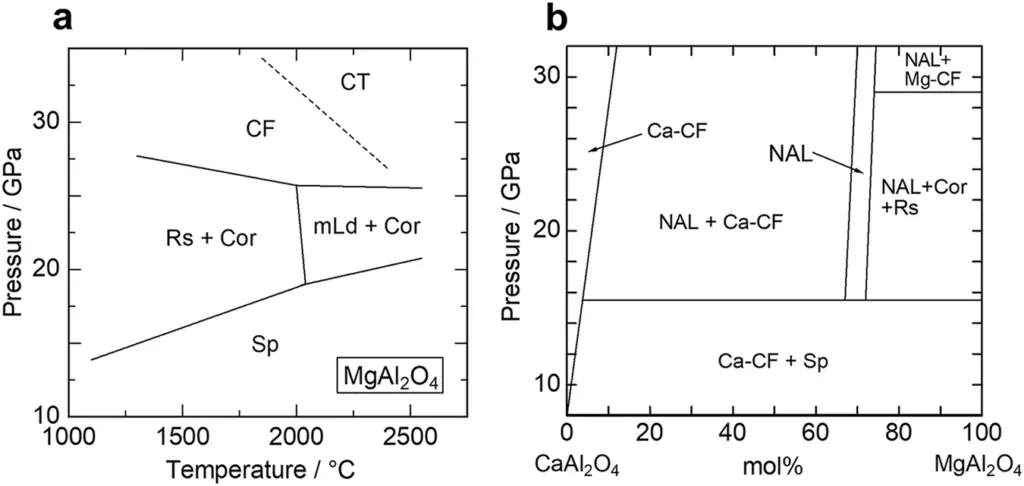
Applications of Materials Science:
Post-spinel phases in materials science present promising prospects for the creation of novel materials possessing distinctive characteristics. Certain post-spinel phases are renowned for their exceptional hardness, rendering them highly suitable for applications such as cutting tools, abrasives, and protective coatings. Due to their exceptional thermal stability and resistance to chemical degradation, they are well-suited for utilization in demanding environments, such as aerospace and nuclear applications.
Furthermore, researchers are currently investigating post-spinel phases as catalysts for chemical reactions, specifically those that occur under high-pressure and high-temperature conditions. Furthermore, their distinctive electrical properties render them promising contenders for sophisticated electronic and photonic devices. Emerging technologies like nanotechnology and quantum computing may utilize these materials as research progresses.
Researchers are conducting investigations on AB2O4 compounds through experimental studies:
High-pressure experimental research on AB2O4 compounds has provided useful insights into the production and characteristics of post-spinel phases. Researchers can use tools like X-ray diffraction to see how the structure changes during phase transitions. Raman spectroscopy, on the other hand, lets them look at the vibrational patterns of the atoms in the lattice, which shows how bonding and coordination change.
These experiments frequently entail exposing materials to pressures beyond those present in the Earth’s mantle and then rapidly cooling them to preserve the high-pressure phase for subsequent examination. These investigations have verified the presence of different post-spinal phases and aided in the characterization of their characteristics.
The field of study concentrates on theoretical analysis and employs computer models to replicate and comprehend intricate phenomena:
Studies based on density functional theory (DFT), specifically theoretical investigations, have played a crucial role in comprehending the response of AB2O4 compounds under pressure. These studies give us a lot of information about the electrical structure, bonding, and stability of post-spinel phases, which helps us understand what we see in the experiments better.
Molecular dynamics simulations and other types of computational modeling help us guess when post-spinel phases will appear and how stable they are likely to be. These models are critical for directing experimental efforts and forecasting the characteristics of novel, yet-to-be-observed phases.
Comparative Analysis of Other Phases under High Pressure:
Post-spinel phases are not the sole high-pressure phases of significance; perovskite and post-perovskite structures are equally crucial in the fields of geochemistry and materials research. These phases’ stability ranges and transition pressures are determined by the material’s composition and the precise pressure-temperature conditions.
For example, under high pressures in the Earth’s mantle, the mineral MgSiO3 changes from a perovskite structure to a post-perovskite structure. This transition is believed to be the cause of the D” layer, which is located near the bottom of the mantle. Understanding these changes and their relationship to post-spinel phases is critical for creating complete models of the Earth’s interior. Crystal structure types of post-spinel phases in terms of cation radii.
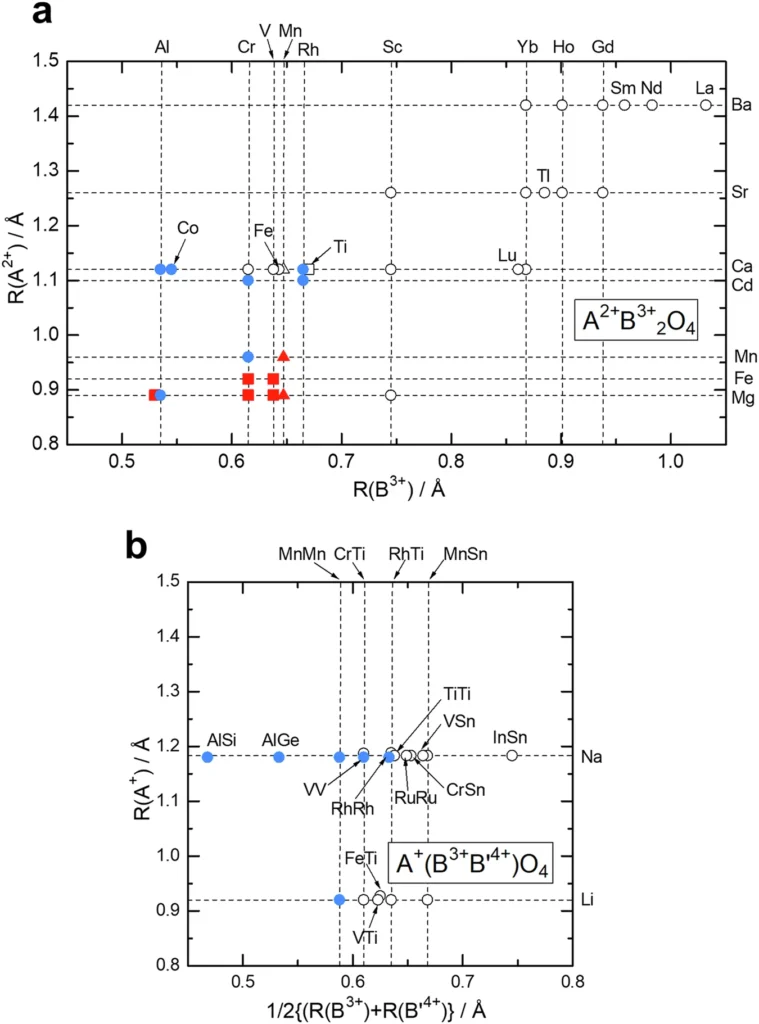
Analysis of Post-Spinel Compounds: Important Case Studies:
Researchers have extensively researched notable post-spinel phases such as Mg2SiO4, which transforms wadsleyite to ringwoodite at high pressure, and Fe2O3, which undergoes numerous phase transitions leading to post-spinel structures. Al2O3, renowned for its corundum crystal structure, also undergoes a transition to a post-spinel phase under highly demanding circumstances.
These case studies offer concrete examples of how post-spinel phases contribute to our comprehension of geophysical processes and present prospective applications in materials science. Every chemical poses distinct obstacles and opportunities for investigation, emphasizing the wide range and intricacy of post-spinel stages.
Difficulties in researching post-spinel phases:
Investigating post-spinel phases has numerous problems, encompassing both practical and theoretical aspects. In practical terms, advanced equipment and techniques are required to create the required high-pressure conditions and precisely analyze the ensuing phases. Furthermore, the rapid cooling required to maintain high-pressure phases can occasionally lead to uncertainties when analyzing the data.
The approximations used in simulations frequently constrain computational models, which in theory offer useful insights. Effectively simulating the intricate interactions in post-spinel phases necessitates substantial computer resources and specialized knowledge, and there is still a tremendous deal to discover about these phases.
Prospects for Future Research:
The field of post-spinel phases is undergoing tremendous advancements, with discoveries and procedures constantly emerging. We expect subsequent investigations to prioritize the enhancement of high-pressure experimental methodologies, particularly through the innovation of novel diamond anvil cells that can achieve even greater levels of pressure. Furthermore, advancements in computational techniques, such as the utilization of machine learning algorithms, have the potential to enhance the precision of phase behavior forecasts.
Explorations of post-spinel phases have the potential to significantly impact our understanding of the Earth’s inner structure and the advancement of novel materials. As scientists further investigate the limits of these stages, we can anticipate acquiring a more profound understanding of both essential geochemical mechanisms and useful applications in materials science.
Significance in the Environment and Industry:
The post-spinel phases are significant in terms of their environmental and industrial implications. Due to their distinctive characteristics, they are well-suited for use in sustainable material development, particularly in the production of energy storage systems that are more resilient and efficient. Furthermore, their ability to remain stable even in harsh settings indicates that they could be valuable in the creation of materials that are resistant to environmental factors, thereby aiding in the achievement of long-term sustainability objectives.
Furthermore, being able to recycle materials with post-spinel structures, especially in electronic and catalytic applications, could help the creation of more environmentally friendly ways to make things. We anticipate that ongoing research in this field will yield significant benefits for both the industry and the environment.
In conclusion:
The investigation of high-pressure phases with a post-spinel structure, known as AB2O4, is an intriguing field that combines the disciplines of geochemistry and materials science. These phases provide valuable insights into the profound processes taking place within the Earth’s mantle, as well as promising potential for the creation of novel materials with distinct features. The combination of experimental and theoretical methods will be essential in fully harnessing the capabilities of these high-pressure phases as further advancements in this field of study occur.
Frequently Asked Questions:
1). What are spinel-type structures, and why are they important?
Spinel-type structures are a category of crystalline materials characterized by the chemical formula AB2O4. These materials are significant due to their distinctive physical and chemical properties, as well as their importance in both natural and manmade materials.
2). What is the impact of high-pressure conditions on spinel phases?
Under high-pressure conditions, spinel structures undergo phase transitions, resulting in the creation of post-spinel phases that are denser, more stable, and possess distinct characteristics.
3). What are the applications of post-spinel phases in materials science?
We investigate post-spinel phases to evaluate their potential in the development of extremely durable materials, advanced ceramics, catalysts, and electronic components.
Post-spinel research is essential for understanding the Earth’s interior because it provides valuable insights.
4). Why is post-spinel research crucial for understanding Earth’s interior?
Post-spinel phases aid in comprehending the composition and behavior of substances in the Earth’s mantle, offering valuable insights into geophysical processes and seismic data interpretation.
5). What role do computational models play in investigating post-spinel phases?
We use computational models like Density Functional Theory (DFT) and molecular dynamics simulations to predict the behavior of post-spinel phases under high-pressure conditions. These models guide experimental study and facilitate the development of novel materials.
For more chemistry blogs, visit chemistry Master

